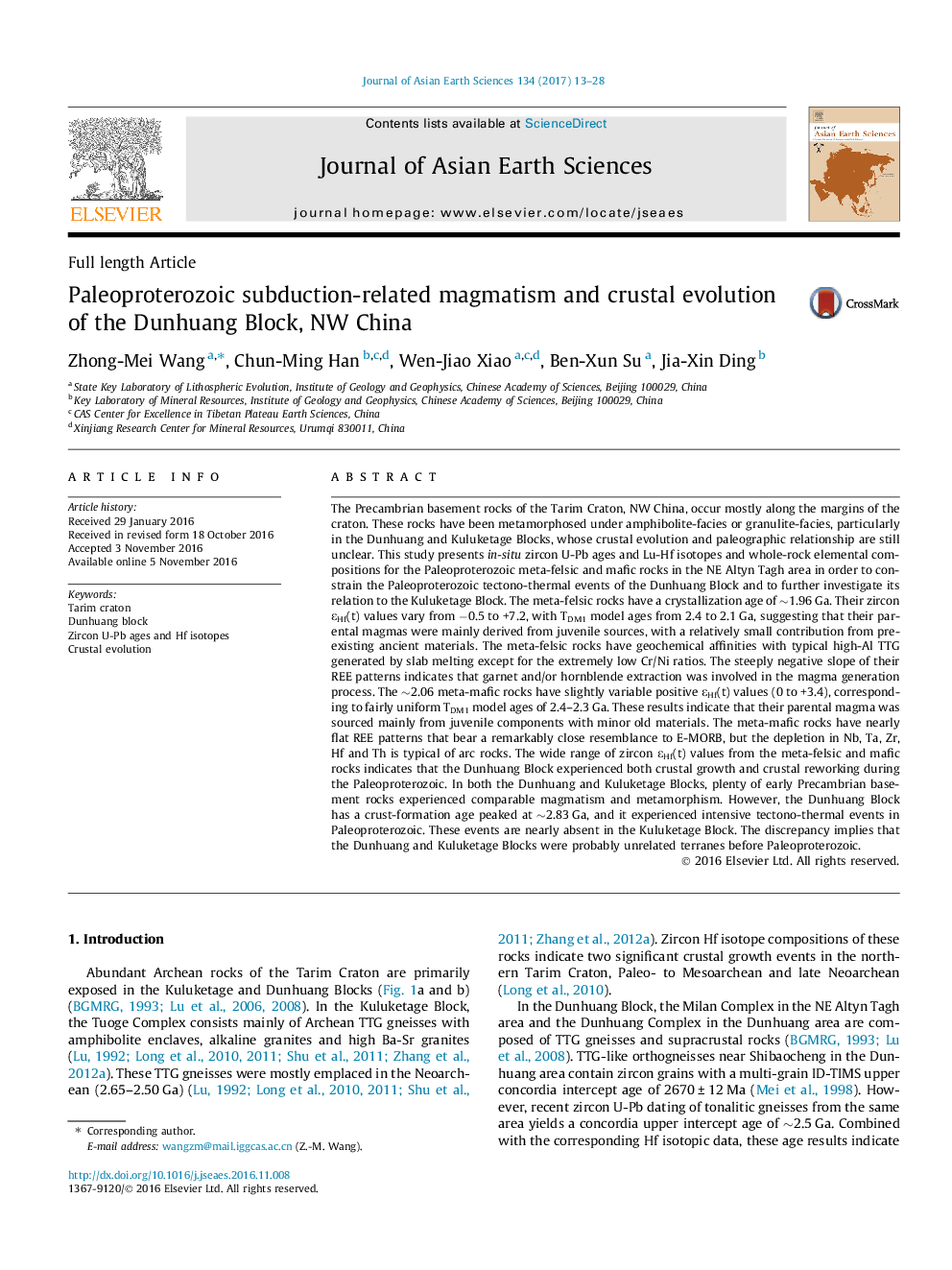| کد مقاله | کد نشریه | سال انتشار | مقاله انگلیسی | نسخه تمام متن |
|---|---|---|---|---|
| 5786167 | 1640337 | 2017 | 16 صفحه PDF | دانلود رایگان |

- The 2.06Â Ga meta-mafic rocks are subduction-related.
- The 1.96Â Ga meta-felsic rocks are generated by partial melting of a subducted slab.
- The Dunhuang Block experienced both crustal growth and reworking in Paleoproterozoic.
- The Dunhuang and Kuluketage blocks are unrelated terranes before Paleoproterozoic.
The Precambrian basement rocks of the Tarim Craton, NW China, occur mostly along the margins of the craton. These rocks have been metamorphosed under amphibolite-facies or granulite-facies, particularly in the Dunhuang and Kuluketage Blocks, whose crustal evolution and paleographic relationship are still unclear. This study presents in-situ zircon U-Pb ages and Lu-Hf isotopes and whole-rock elemental compositions for the Paleoproterozoic meta-felsic and mafic rocks in the NE Altyn Tagh area in order to constrain the Paleoproterozoic tectono-thermal events of the Dunhuang Block and to further investigate its relation to the Kuluketage Block. The meta-felsic rocks have a crystallization age of â¼1.96 Ga. Their zircon εHf(t) values vary from â0.5 to +7.2, with TDM1 model ages from 2.4 to 2.1 Ga, suggesting that their parental magmas were mainly derived from juvenile sources, with a relatively small contribution from pre-existing ancient materials. The meta-felsic rocks have geochemical affinities with typical high-Al TTG generated by slab melting except for the extremely low Cr/Ni ratios. The steeply negative slope of their REE patterns indicates that garnet and/or hornblende extraction was involved in the magma generation process. The â¼2.06 meta-mafic rocks have slightly variable positive εHf(t) values (0 to +3.4), corresponding to fairly uniform TDM1 model ages of 2.4-2.3 Ga. These results indicate that their parental magma was sourced mainly from juvenile components with minor old materials. The meta-mafic rocks have nearly flat REE patterns that bear a remarkably close resemblance to E-MORB, but the depletion in Nb, Ta, Zr, Hf and Th is typical of arc rocks. The wide range of zircon εHf(t) values from the meta-felsic and mafic rocks indicates that the Dunhuang Block experienced both crustal growth and crustal reworking during the Paleoproterozoic. In both the Dunhuang and Kuluketage Blocks, plenty of early Precambrian basement rocks experienced comparable magmatism and metamorphism. However, the Dunhuang Block has a crust-formation age peaked at â¼2.83 Ga, and it experienced intensive tectono-thermal events in Paleoproterozoic. These events are nearly absent in the Kuluketage Block. The discrepancy implies that the Dunhuang and Kuluketage Blocks were probably unrelated terranes before Paleoproterozoic.
86
Journal: Journal of Asian Earth Sciences - Volume 134, February 2017, Pages 13-28